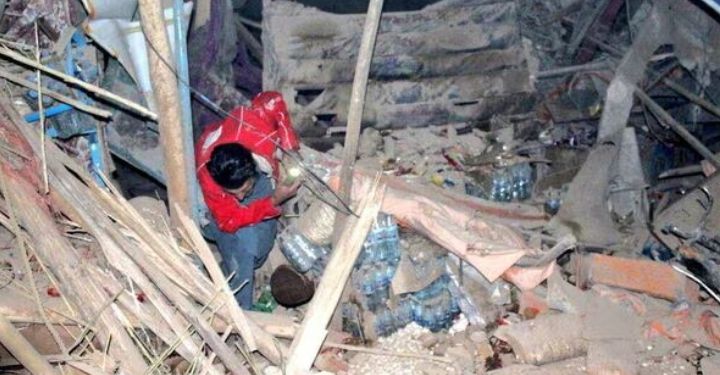In the pre-dawn hours of Monday, a powerful earthquake measuring magnitude 6.3 struck northern Afghanistan, leaving at least 20 people dead and about 320 injured, according to official figures. The tsunami-sized human impact belies the moderate size of the quake; its shallow depth, terrain and infrastructure vulnerabilities have all combined to magnify the devastation.
The epicentre was near the town of Khulm in the mountainous region of the country’s north, with the quake occurring at a depth of 28 km (17 miles). The provinces of Balkh Province and Samangan Province appear to have been the hardest-hit, with whole villages reported to have suffered damage and the local health ministry warning that the figures may rise as rescue crews reach more remote settlements.
In the administrative centre of Balkh, single day residents described the terror of the tremor — windows rattling, walls crackling, entire families rushing into the streets as homes and mosques shook. Hospitals in Kabul and elsewhere have been placed on high alert. One particularly symbolic blow came when part of the city’s historic Blue Mosque was damaged: masonry and tiles were seen lying in the courtyard, although the main structure reportedly remained standing.
Why the damage and casualties are so high
Afghanistan is especially vulnerable to seismic events. The country lies along active tectonic fault zones — the collision zone of the Indian and Eurasian plates generates frequent earthquakes across the region. Furthermore, many homes and buildings in rural and mountainous areas are constructed from mud-brick or poorly reinforced materials. When strong shaking strikes, these structures collapse quickly. The terrain itself compounds the hazard: remote villages are often accessible only via narrow, winding roads — meaning rescue and relief efforts can be delayed, and casualty figures change as teams arrive.
Emergency response under way
Government spokespeople say rescue and health teams were dispatched swiftly. The Ministry of Public Health stated that local hospitals in the northern provinces were taking in injured people and that the situation remains fluid. But there are immediate challenges: power outages were reported across the country, including in the capital Kabul, due to damage to infrastructure. Landslides triggered by the quake also caused blockages on key roads linking the affected provinces, hampering access for rescue crews.
Because the affected areas include mountainous, sparsely populated districts, authorities caution that the death toll could increase. Villages buried under rubble, homes collapsed and families still uncontacted remain a concern.
Humanitarian and governance context
The quake comes at a difficult time for Afghanistan, which has been grappling with multiple crises: economic collapse, reduced international aid, drought and displacement. For the current administration, the disaster presents a major test of capability and response given the country’s fragile infrastructure and limited resources.
In recent years, similar disasters have highlighted how vulnerable the country’s rural areas are. For example, just a few months ago in August a magnitude 6.0 quake struck eastern Afghanistan, killing over 2,000 people and injuring thousands more. The repeated disasters underline the urgency of strengthening building codes, emergency preparedness and access to remote communities.
What happens next
In the immediate term, the priority is rescuing any trapped survivors, treating the injured, providing shelter and basic services to displaced families. Winter is fast approaching in Afghanistan, which means that shelter, heating and insulation become life-saving issues, especially in mountainous districts already cut off by snow or landslides. Humanitarian agencies will face a race against time.
In the medium term, officials and aid agencies will need to assess the structural damage, rebuild or repair homes and vital infrastructure (roads, power, water), and support livelihoods for people whose homes and farms may have been ruined. At the same time, monitoring for aftershocks is critical — although there is no guarantee of another large quake, any significant tremor could trigger additional landslides, secondary collapses or exacerbate the humanitarian burden.
International dimension
Given the scale and remote nature of the disaster, international assistance will likely be requested. Donor agencies are already warning that logistical constraints in reaching remote valleys may slow down response efforts. The experience from previous disasters shows that timely aerial or ground access can greatly reduce deaths and suffering.
Message of solidarity
For the people of Afghanistan — especially in the north where this quake struck — the trauma is deep. Entire families may have lost homes. Communities dependent on agriculture may face months of recovery ahead. In the face of this tragedy, humanitarian solidarity, rapid delivery of aid and the strengthening of local capacity will be crucial.




